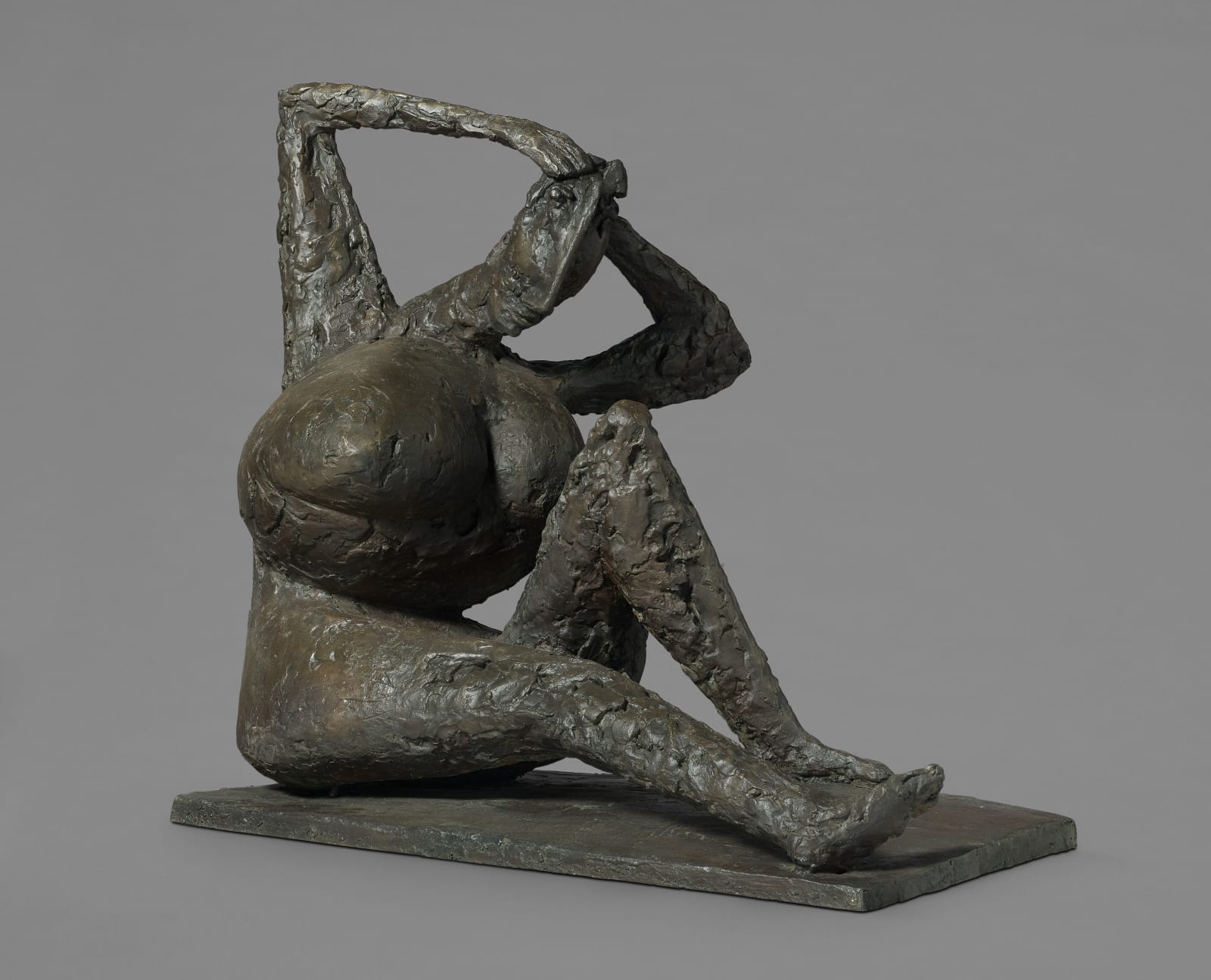Anthony Caro 1924-2013
82 x 44 cm
Further images
Between 1953 and 1959, Caro’s work focused mainly on single figures performing everyday actions - putting on clothes, smoking, waking up - their proportions imaginatively distorted to express how an action felt, rather than how it looked. Caro explained: ‘My figurative sculptures were to do with what it is like to be inside the body. That means, what it’s like to be sitting in this chair, or lying flat down, how it feels to smile. For example, when you’re lying down, you feel heavy, your weight causes you to feel flattened and pressed down.’ 1
The sculptor’s interest in physical sensation was reflected in his equally sensuous approach to materials. Working with clay and plaster, always with a view to casting in bronze, he later mixed in stones and bits of found objects. Seeking to animate the clay, he would drop it from a height, incorporating the impacted pieces into the figures. The pitted, irregular surface of Woman Arranging her Hair I (Spring), can be seen, in part, as a reaction against the smooth and curvilinear forms of Moore. Caro’s figures bear some relation to the work being made by his contemporaries, for example Kenneth Armitage’s Woman Lying on Her Back, 1955, although Caro’s figures are more brutal, abject even, and so are perhaps more aligned with Germaine Richier and Jean Dubuffet.
Ian Barker notes that Caro drew upon specific paintings by Picasso as a reference for his sculptures, identifying the oil La Toilette, 1906, as the reference for this particular work. The pose here is also markedly similar to a bronze by Degas, made c1895-1910, which has the same title as Caro’s sculpture, and in which the figure’s raised arms make the same distinctive angles in the air. Here, both the abstract qualities of the figure - the circles and triangles from which she is composed - and the way she topples over the edge of the base, anticipate the abstract steel sculptures Caro pursued after 1959.
1 Phyllis Tuchman, ‘An Interview with Anthony Caro’, Artforum, June 1972
Provenance
Nat Halper, H.C.E. Gallery Provincetown, Massachusetts, USAVera G. List, acquired from the above in March 1961
Private Collection, UK, acquired 2003
Exhibitions
Milan, Galleria del Naviglio, Anthony Caro, 1956
London, Gimpel Fils, Paintings by Redvers Taylor, Sculpture by Anthony Caro, January 1957, cat no.33, not illusNew York, Visual Arts Museum, group exhibition, 1975, details untraced
Literature
Theo Crosby, ‘Anthony Caro at Galleria Naviglio’, Architectural Design, Vol.XXVI, No.3, March 1956, p107, illus
Diana Echler, Conversations with Four Sculptors about the Figurative Work they were doing in the Fifties and their Experiences in the Sixties, thesis study, 1985, illus p48
Paul Moorhouse, ‘A Sense of Architecture: The Sculpture of Anthony Caro’, Anthony Caro: Sculpture Towards Architecture, Tate Gallery exhibition catalogue, 1991, pp11-33
Dieter Blume, Anthony Caro: Catalogue Raisonne Vol.IV, Student Work 1942-1953 and Figurative Sculpture 1954-1959, Verlag Galerie Wentzel, Köln, cat no.A61, illus b/w p49
Anthony Caro, ‘A Sculptor Remembers’, The Independent, 2 July 2004, pp2-4, illus p4
Ian Barker, Anthony Caro: Quest for the New Sculpture, Lund Humphries, Aldershot, 2004, p59, illus b/w p60 and p70









